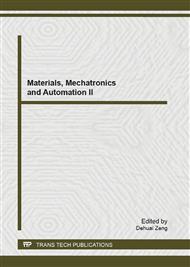p.680
p.690
p.694
p.698
p.704
p.709
p.715
p.721
p.728
Investigation on Surface Degradation of Wind Turbine Blades Surface Using Modified Surface Tracking Test as Part of Lightning Protection Improvement
Abstract:
This research work investigates the surface degradation of modified surface as part of wind turbine blade surface which is made from epoxy resin mixed with calcium carbonate (CaCO3) in different percentage as a filler elements. Accelerated test with AC voltage of 4.5 kV 50 Hz with a saline solution using flow rate of contaminant equals to 0.6 ml/min according to IEC 60587 standard [. It was found that ,the solid insulators which has a high percentage of calcium carbonate filler will slowdown the process of surface tracking. On the other hand, if the percentage of filler is more than 40% by weight ,it will lead to a faster tracking . In addition, researchers have tried to develop a type of surface condition by comparing the time to track between flatted and corrugated surfaces test sample. It was found that , the flatted surface can withstand the generated track than corrugated surface. Also, when the incline plane has been increased rather than 45 degrees, the breakdown process occurred slowly.
Info:
Periodical:
Pages:
704-708
Citation:
Online since:
August 2013
Authors:
Keywords:
Price:
Сopyright:
© 2013 Trans Tech Publications Ltd. All Rights Reserved
Share:
Citation:


